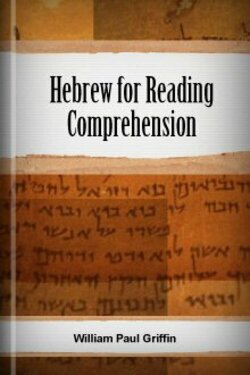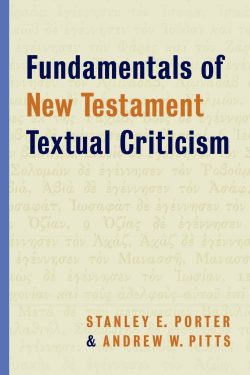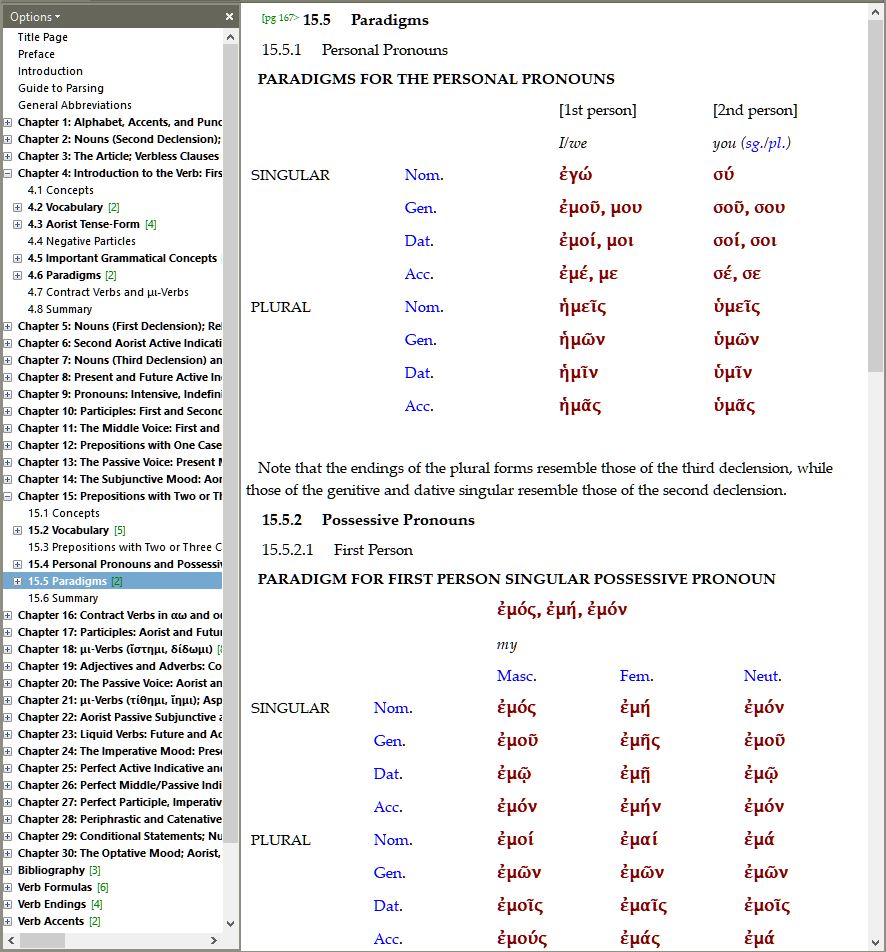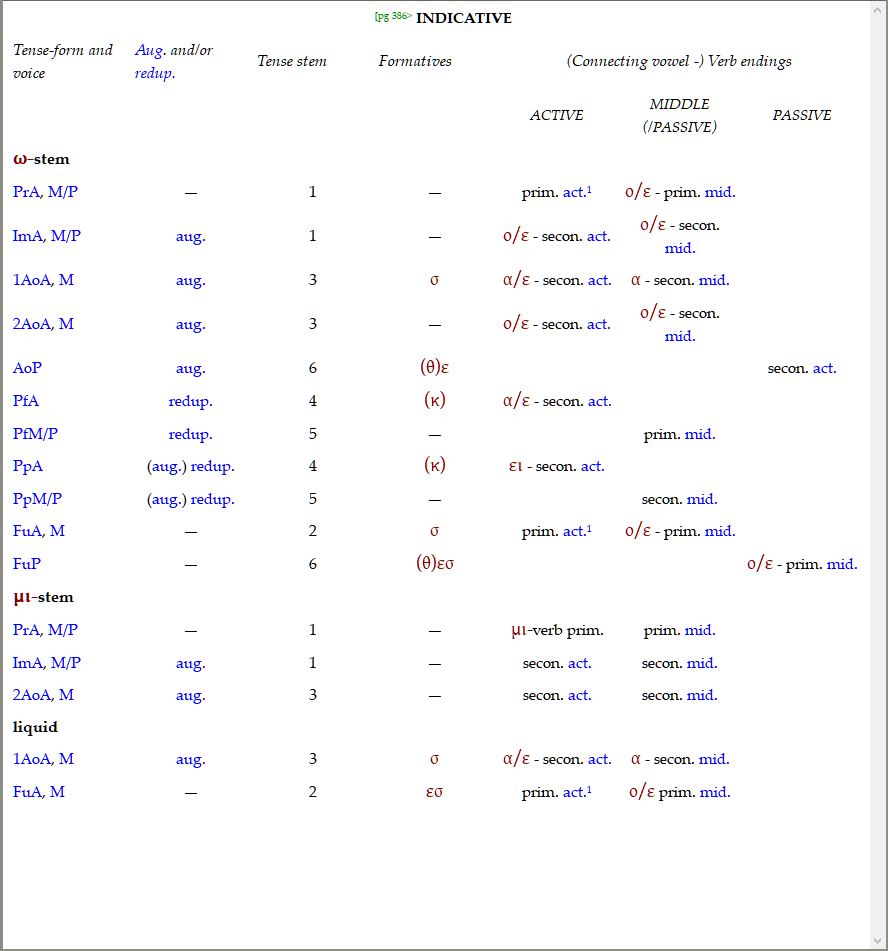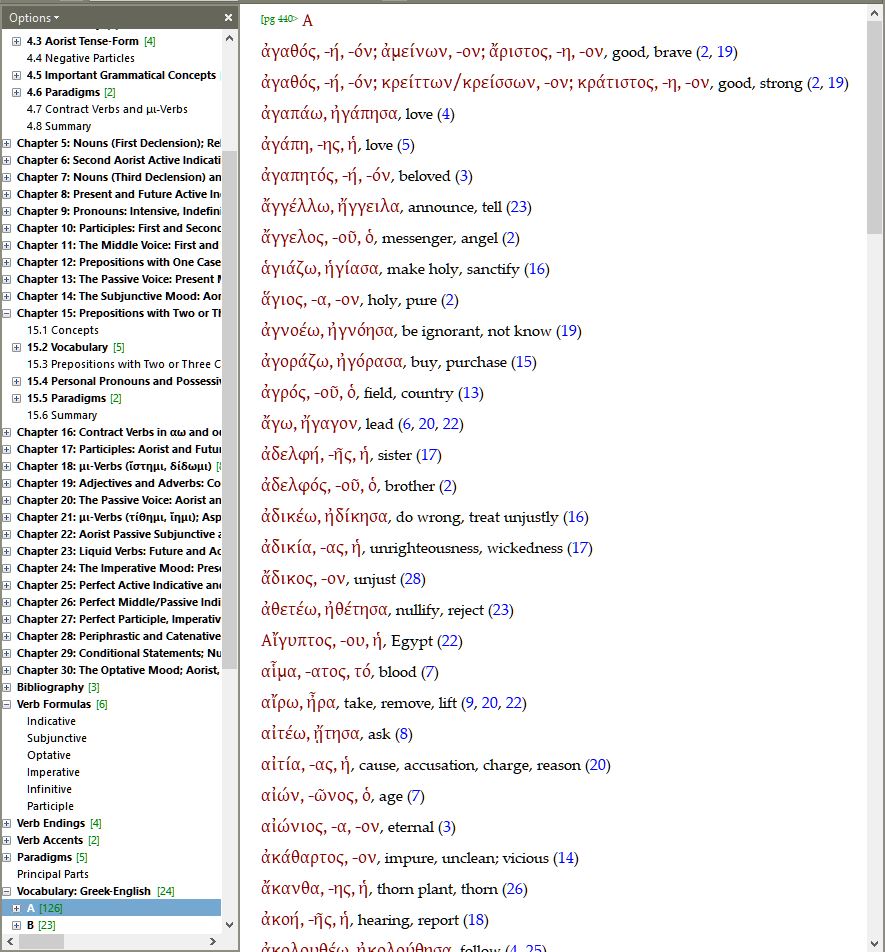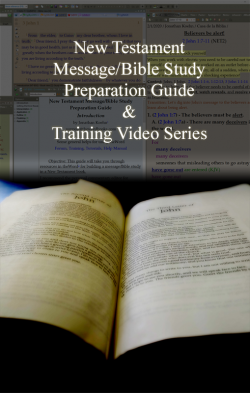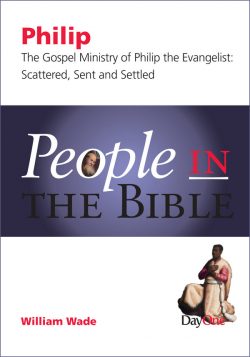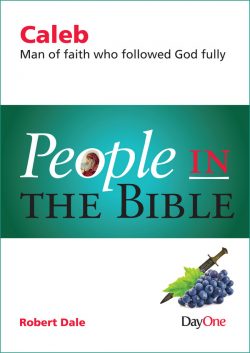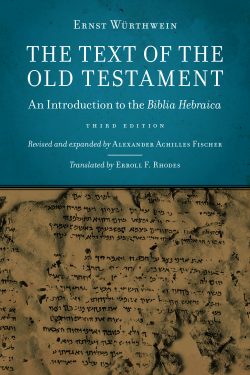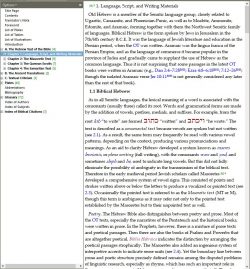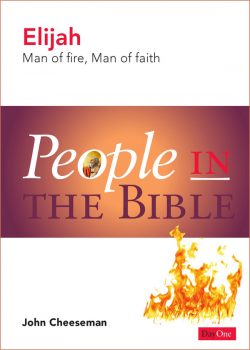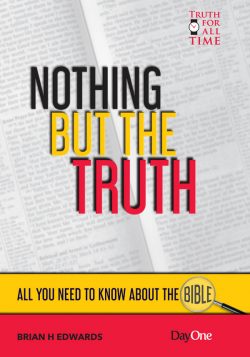“Stanley Porter’s Fundamentals of New Testament Greek” by Craig Noll
Craig Noll, an editor for Eerdmans, works out of his home office in suburban Rhode Island, where the snow now is deep and some nights the coyotes howl. He enjoys Norwegian (his wife, Anne Marit, began life in Norway but, providentially, didn’t stay there), Turkish (learned in Peace Corps duty in Turkey, fortified by many later return visits), and the Greek of Paul, John, Luke, and the others.

***
“. . . an understanding that is both broad and deep” — a new Greek text by Porter, Reed, and O’Donnell
I love languages — always have! And I love editing, now after nearly 26 years of doing it full time. For me then, as you can imagine, it was no ordinary day when the assignment came down to edit Fundamentals of New Testament Greek, by Stanley Porter, Jeffrey Reed, and Matthew Brook O’Donnell. I quickly discovered that, both in the text and in the accompanying workbook, the authors were wonderfully serious-minded about their task. From the introduction to their text:
In an effort to minimize incompleteness, we have included fuller and more comprehensive discussions, definitions, and presentation of material than are usually found in other beginning grammars. Students may initially find this approach daunting, though we are convinced that, in the long run, it will serve them better. Not all of the material is for instantaneous learning or instant recall, but collectively it is meant to lay a solid foundation, to fill in gaps, and to provide an understanding that is both broad and deep. (p. xii)
Some of the broads and deeps of the 30 chapters of this outstanding grammar:
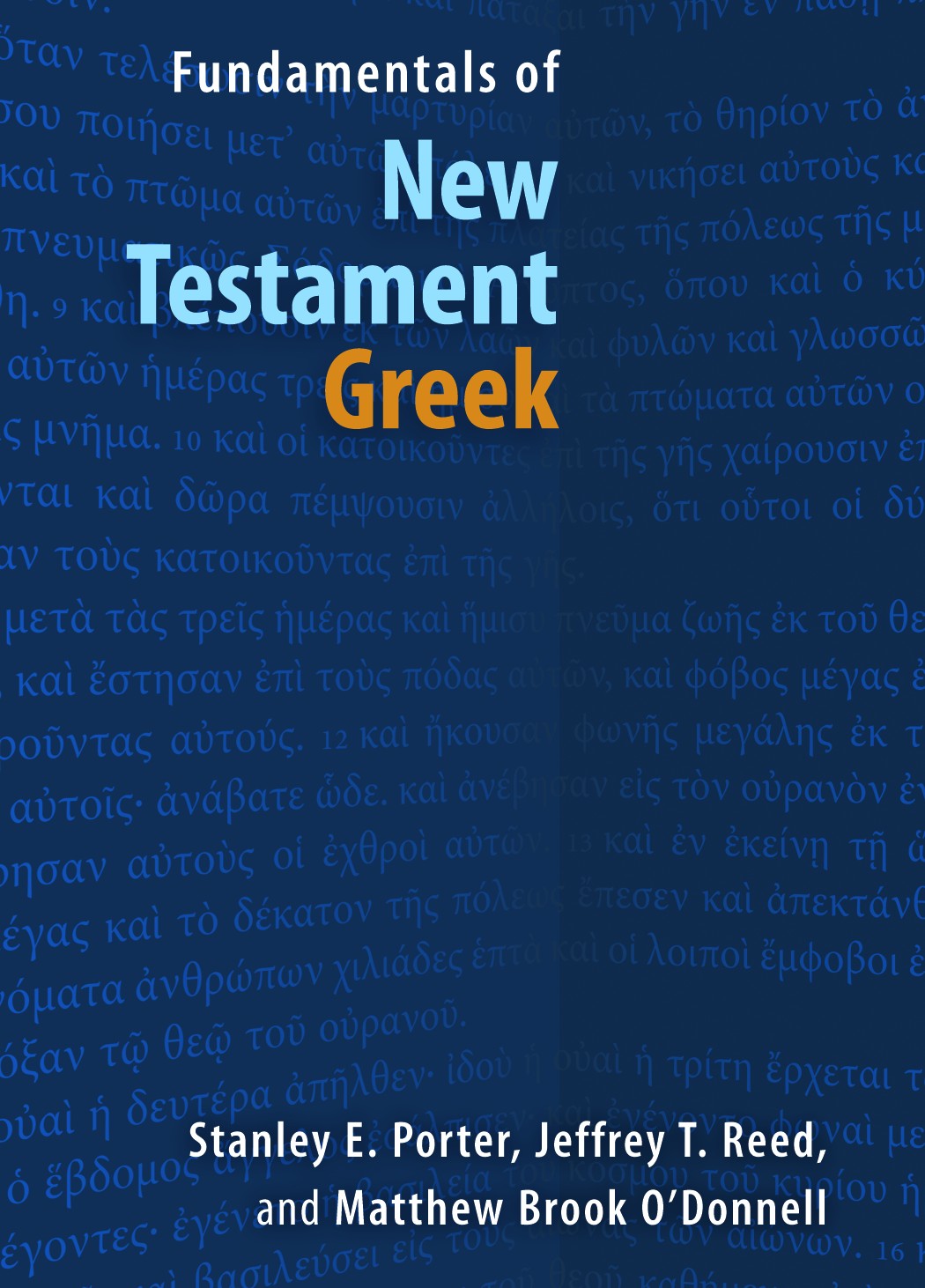
1. the verbs. As is only fitting for a language where a single verb can have several hundred different forms, Fundamentals begins study of verbs promptly in chapter 4. Starting with the first aorist active indicative and then infinitive, students meet every tense-voice-mood combination one by one, complete with (1) formula; (2) example paradigm, showing for each form the parsing abbreviation, the components (the 2 to 6 morphemes that make up each form), the inflected form, and the gloss; (3) comments on any irregularities in spelling or accent; and, at the end of each chapter, (4) paradigms, which give full examples of all grammatical points covered in the chapter. The use of different typefaces and formats helps keep these various points distinct for readers.
2. all the verbs. Here I mean in particular the infamous μι-verbs, three of which are introduced for the first time as early as (gasp!) chapter 4. Full discussion of these nasty verbs waits till chapters 18 and 21, but by starting early, the authors give students a fighting chance of mastering them, some of the most frequently occurring verbs in the New Testament.
3. aspect. Students first meet the concept of verbal aspect in the introductory “Guide to Parsing.” By aspect, the authors mean “the primary category of Greek verb usage, namely, the speaker’s or writer’s perspective on the action of the verb . . . expressed by the selection of a particular tense-form” (p. 33). Comments on aspect appear throughout (though not heavy-handedly), right up to chapter 28, with its discussion of the role of verbal aspect in periphrastic and catenative constructions.
4. accent. In recent decades, writers of beginning Greek grammars have all too frequently waffled on the value of having students learn Greek words with their accent marks. Not Porter, Reed, and O’Donnell! While admittedly not many pairs of words differ only in accent (e.g., ἀλλά/al-LAH = “but” vs. ἄλλα/AL-lah = “other things”), paying attention to how words are accented is more than helpful when reading Greek out loud or when memorizing paradigms or verses from the Greek NT itself, all of which the authors specifically recommend (pp. xiii-xiv). Students encounter the specific and general rules of accenting in chapter 1 and are reminded of them throughout. A helpful feature that I have not seen elsewhere is a pair of charts showing the accents of the lexical forms of the 16 kinds of Greek infinitives and participles (p. 392).

5. use of a parsing scheme. All Greek grammars have their scheme for parsing Greek verbs, nouns, pronouns, and adjectives. Fundamentals stands out in actually using its parsing scheme at every opportunity — from the vocabulary list in chapter 2 all the way through to the example paradigm of the future passive optative in chapter 30, and again in the extensive paradigms section in the back matter (pp. 393–434). Furthermore, the Workbook accompanying the text is rife with parsings, especially in the 500+ footnotes to the verses and paragraphs taken from the Greek NT, which form a good portion of the exercises for each chapter.
6. a robust vocabulary. Porter, Reed, and O’Donnell introduce a vocabulary of over 950 words, an ambitious number that includes virtually all the words appearing 12 times or more in the Greek NT. Not a bad preparation for an exegesis or second-level Greek class!
7. and much more. Not to be overlooked in Fundamentals — which definitely makes good on its promise to “lay a solid foundation” — are full discussions of the pluperfect tense, the optative mood, the five aspectually vague verbs in the Greek NT (most notably εἰμί), and the five classes of conditional statements. For good measure, readers are introduced (by name) to Grassmann’s Law. And for the Web, Eerdmans is currently preparing resources (keys to the Workbook exercises, sample lesson handouts, educational games, and more) to support all players in the Greek-learning game.
All well and good — but what about the grammar with the target on its back, the one from whose guidance “over 200,000 students have learned biblical Greek” (William D. Mounce, Basics of Biblical Greek, 3rd ed. [Zondervan, 2009], back cover)? Certainly we all can only laud this achievement, both Bill’s and that of the host who have used this book.
Going forward, however, I’d urge all interested parties to take a close look at the new kid on the block. See whether, on the particulars I’ve enumerated here, Fundamentals does not in fact stand apart from its competition, especially its most successful one to date. Such an inspection, I’d say, will easily support the authors’ contention that Fundamentals “will take students to a level not often achieved through other beginning textbooks” (p. x).
But maybe you don’t have the time or stomach for a grammatical tit-for-tat? Well, go deeper. Ask about purpose or rationale. Above, I have quoted Porter, Reed, and O’Donnell on their goals for Fundamentals. Compare what they say with goal number 1 for Bill Mounce’s Basics: “To approach learning Greek not as an intellectual exercise but as a tool for ministry” (p. xiv). On one level, I can appreciate the concern to clear the intellectual decks, the better to help students focus on an end product. On a deeper level, though, don’t we Christians contend that loving God “with all your mind” means that our intellect must be part of our ministry and inseparable from it, whether in private prayer or public preaching — or painstaking parsing?
Well, now you know about my love for language, and especially my love and respect for Fundamentals of New Testament Greek. What sweeter thoughts (speaking only professionally) could this Valentine’s Day possibly bring?!

